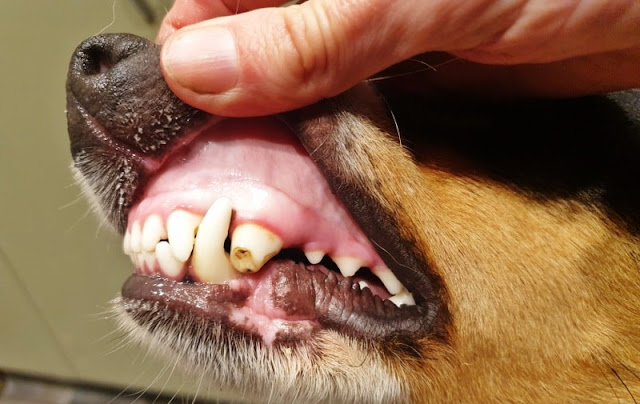A broken tooth is a serious issue for any dog owner. Not only is it painful for your dog, but it can also lead to infection and other health problems. In this blog post, we'll show you how to diagnose and treat a broken tooth in dogs, as well as how to prevent one from happening in the first place.
How to Diagnose a Broken Tooth in Dogs.
There are many different causes of a broken tooth in dogs. The most common cause is chewing on hard objects, such as bones or chew toys. Other causes include:
- Teeth grinding (bruxism)
- Trauma to the face or mouth
- Infection
- Tumors
Symptoms of a Broken Tooth in Dogs.
The most common symptom of a broken tooth is pain. This can be evidenced by your dog whimpering or yelping when you touch their mouth or they eat/drink. Other symptoms may include:
- Drooling/excessive saliva production
- Loss of appetite
- Bleeding from the mouth
- Swelling around the affected tooth/jaw area
- Redness and inflammation around the gums
If you notice any of these symptoms, it's important to take your dog to the vet as soon as possible for treatment.
Diagnosing a Broken Tooth in Dogs.
Your veterinarian will perform a thorough physical examination of your dog's mouth and teeth to diagnose a broken tooth. They may also take x-rays to get a better look at the extent of the damage and whether there is any infection present. Once a diagnosis is made, your vet will discuss treatment options with you.
How to Treat a Broken Tooth in Dogs.
If your dog has a broken tooth, it's important to take action right away. The sooner you treat the tooth, the less likely your dog is to experience complications such as infection.
There are a few things you can do at home to treat a broken tooth:
- Rinse the area with warm water. This will help to clean the wound and remove any debris.
- Apply pressure to the area with a clean cloth. This will help to stop any bleeding.
- Give your dog pain relief medication. Over-the-counter medications like ibuprofen or acetaminophen can help to ease your dog's pain and inflammation.
- Put a cold compress on the area. This will help to reduce swelling.
Treating a Broken Tooth at the Vet.
If your dog has a serious break or if there is any sign of infection, it's important to take them to the vet right away. The vet will be able to provide more comprehensive treatment and make sure that your dog doesn't develop any complications from their broken tooth.
At the vet, treatment for a broken tooth may include:
- A physical examination
- X-rays
- Cleaning and polishing the tooth
- Filling or capping the tooth
- Extracting the tooth
After treatment, your vet may give you some pain relief medication for your dog and instructions on how to care for their broken tooth at home.
How to Prevent a Broken Tooth in Dogs.
The best way to prevent a broken tooth in dogs is to feed them the right foods. Dogs should have a diet that is high in protein and low in carbohydrates. This will help keep their teeth strong and healthy. You should also avoid giving your dog hard chew toys, as this can cause their teeth to break.
Brushing Your Dog's Teeth Regularly.
Another way to prevent a broken tooth in dogs is to brush their teeth regularly. You should brush your dog's teeth at least once a week, using a toothbrush designed for dogs. If you are not comfortable brushing your dog's teeth, you can take them to the vet for a professional cleaning.
Taking Your Dog to the Dentist.
The best way to prevent a broken tooth in dogs is to take them to the dentist for regular checkups and cleanings. During these appointments, the dentist will be able to identify any problems with your dog's teeth and recommend treatment options if necessary.
Conclusion
A broken tooth can be a serious issue for a dog, and it is important to know how to diagnose and treat one. With the right care, a broken tooth can be successfully treated and prevented.

